What Eating One Bad Meal Does to Your Body
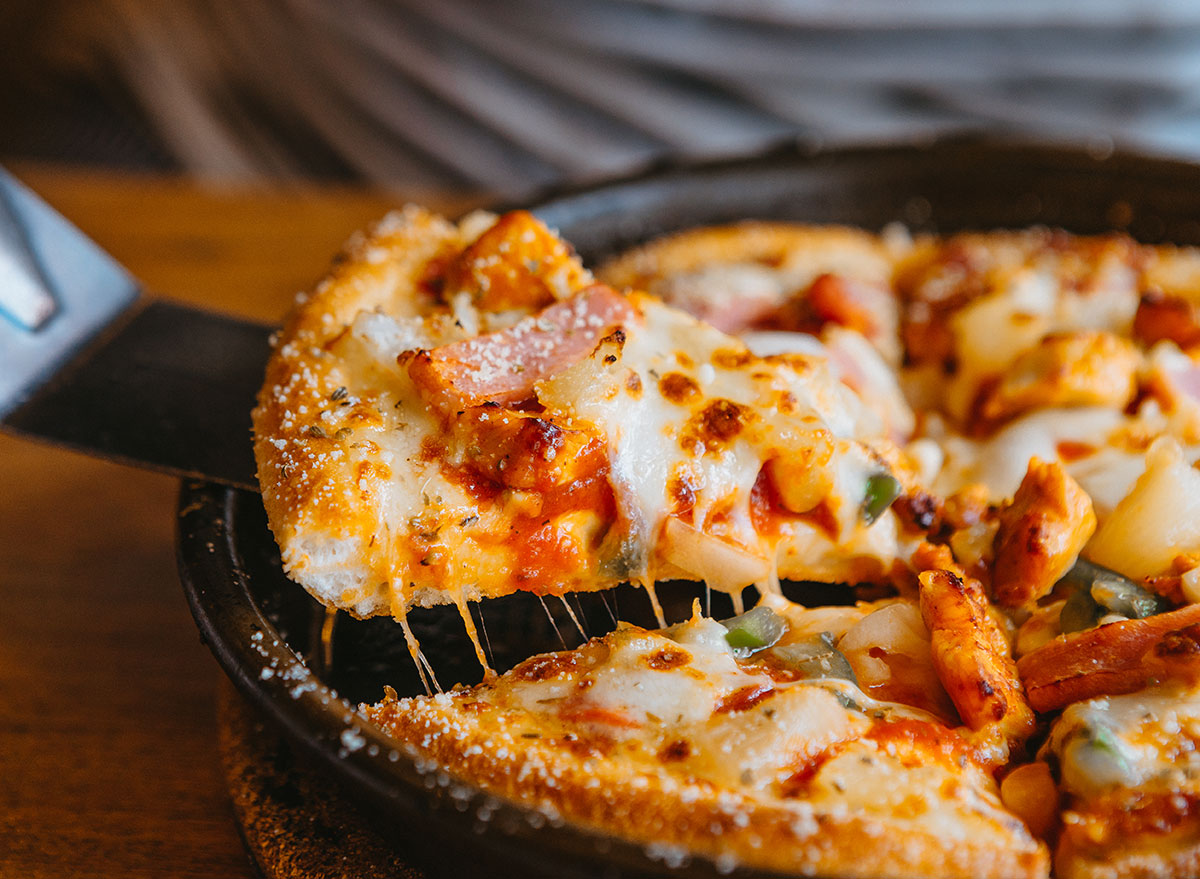
If you want a healthy metabolism, it's helpful to understand a few basics of biochemistry, and to remember that your cells do two things after you've eaten your food: They build things up to store them, usually as fat, and they break things down to create energy. It's a process called "catabolism," and it's essentially your body's inner power plant. And if you're eating the right foods, your power plant will be running at peak efficiency, maximizing the breaking down and releasing while minimizing the storing.
But let's say you're eating the wrong foods. Everyone has a bad day at work every now and then, feels stressed, and uses it as the perfect excuse to indulge in a greasy Seamless order. (You've earned it, right?) Now, if you regularly eat a healthy, balanced diet, there's no problem in, say, tucking into a big sausage pizza every now and then. Go for it. Doing it all the time? Not so great. Your body will be doing a lot more storing than it is breaking down. If you're curious to know why, here we explain what just one bad meal does to your body—and also what will happen if you make eating sausage pizza a regular thing.
So read on, and for more healthy eating tips, don't miss this definitive list of the 21 Best Healthy Cooking Hacks of All Time.
Your body immediately gets to work.
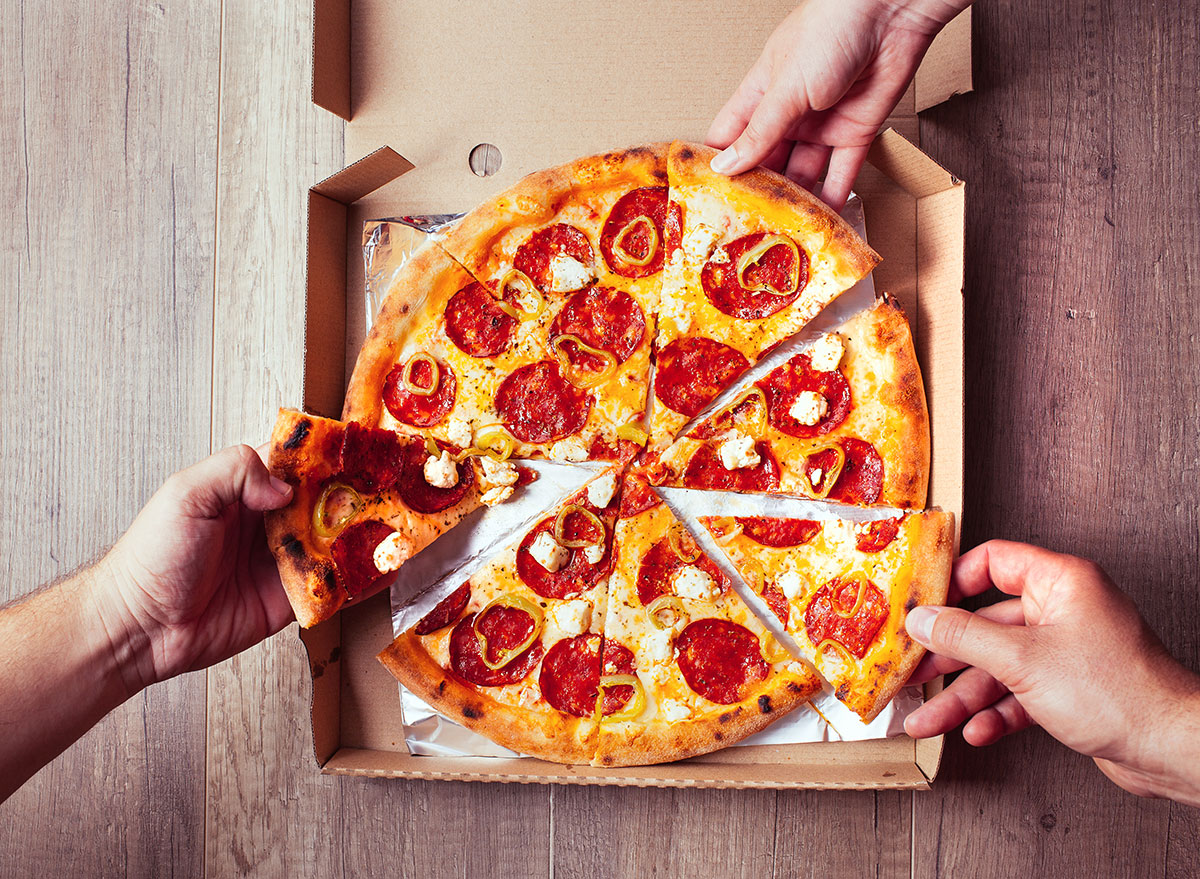
After you swallow that first bite, enzymes in your digestive system get busy breaking down the carb-heavy crust in that pizza into simple sugars (or glucose), the proteins in the cheese and sausage into amino acids, and the fats encased in the sausage and olive oil into fatty acids.
Related: Sign up for our newsletter for more healthy eating news.
Your digestive system goes for the nutrients.
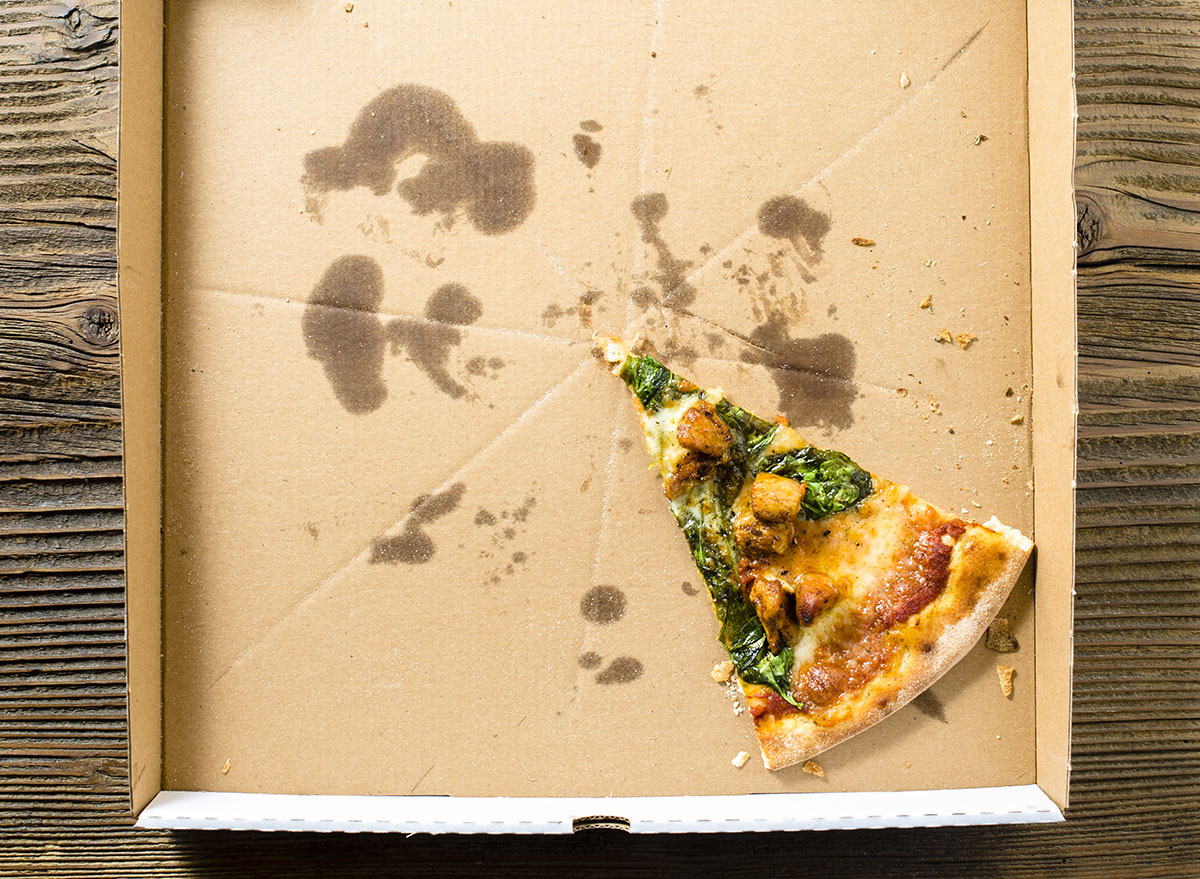
Throughout your gastrointestinal track, you have microbiomes—all sorts of little organisms that are going to take a lot of the nutrients from the pizza and, according to Florence Comite, MD, a clinician-scientist and founder of the Center for Precision Medicine & Health, in New York City, "they're going to use them in various ways to transport them into the body or to grow or to shrink or to salvage whatever is necessary to make the body healthy." The broken-down components from your pizza will be released into the bloodstream, which is where your hormones come into play. (And for more on optimizing your gut health, make sure you're aware of the 25 Unhealthiest Habits for Digestion.)
Your inner radio broadcast system gets to work.
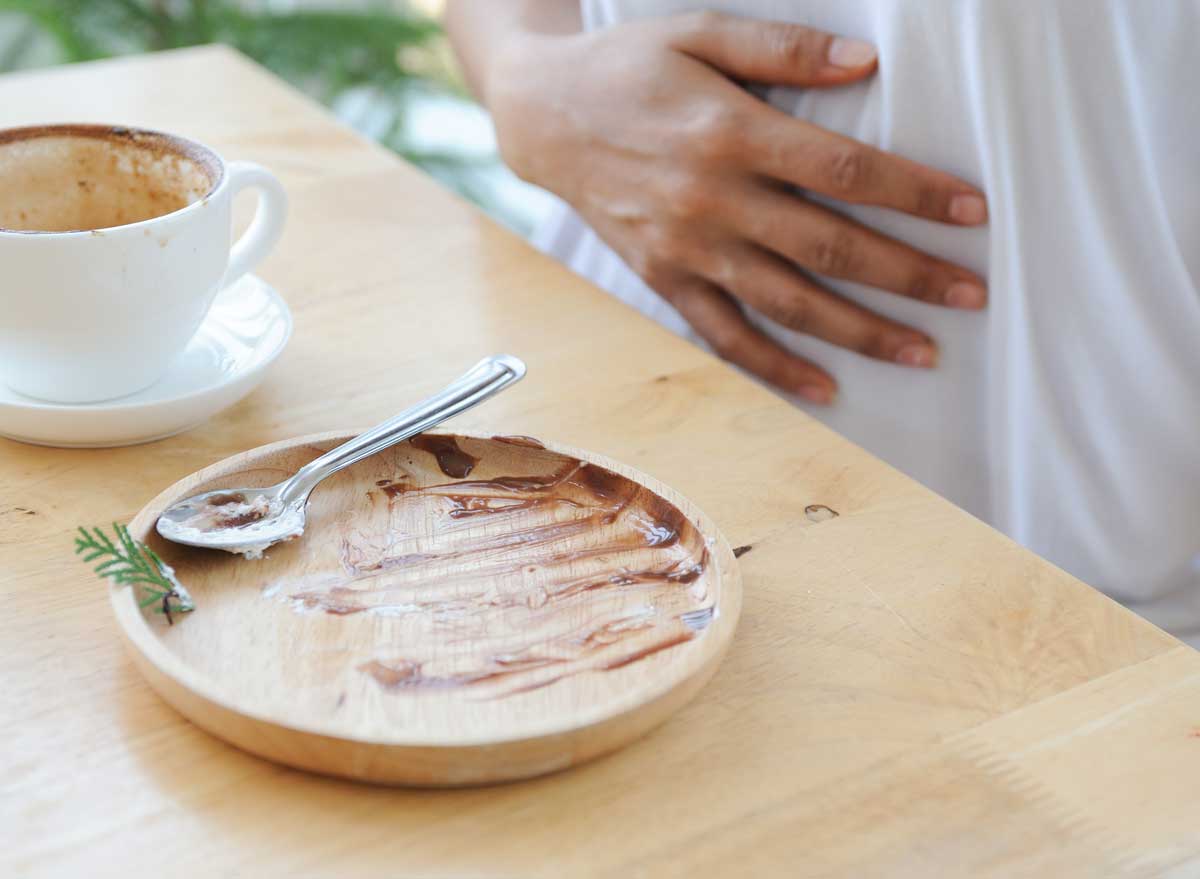
Now, if your central nervous system works like analog machinery—your brain tells your hand to pick up that slice of pizza through a signal sent directly to your muscles through your body's inner wiring—your endocrine system, the scientific name for your body's hormones, works more like old-school radio.
Your pancreas, liver, kidneys, and even your fat and your gut, all work like little AM/FM stations creating hormones and releasing them into the bloodstream, where they flow freely through he body until they're picked up again if another part of the body is waiting for them. Your body is incredibly complex, and there are countless stations transmitting countless messages all the time.
As it pertains to your diet, the single most important hormone—the one that hijacks the entire system when you eat—is insulin. When you eat the pizza, your insulin, which is produced in the pancreas, immediately rises. Bite after bite of that sausagey goodness causes insulin to move into the bloodstream to direct all of that broken-down glucose, amino acids, and fatty acids into your muscles and tissues, where it will be either burned off as energy or stored as fat.
If you're eating too much pizza, it's not great for you, and the reason has less to do with that tasty sausage and that delicious cheese—which, for our purposes, we'll assume isn't processed gunk. (For what it's worth, most of the amino acids your body can't use simply leave the body as waste.) However, the real reason has more to do with the crust.
Your army of insulin awakens.
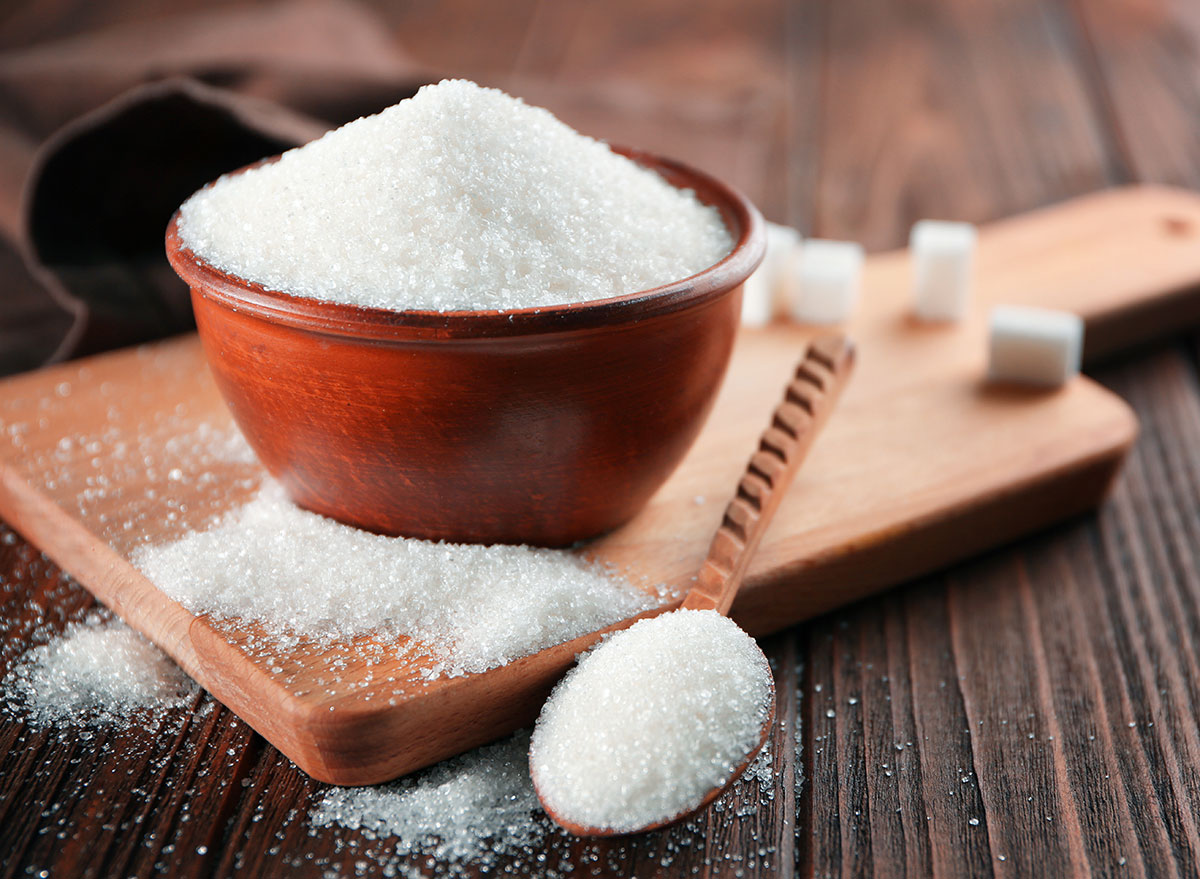
Excess sugar, refined sugar, and bad carbohydrates—the kind contained in run-of-the-mill pizza crust—wreak havoc on your body. When you flood your bloodstream with too much sugar, especially "free sugars," meaning anything added to the food by a cook, manufacturer, or consumer, your pancreas essentially freaks out and releases more and more insulin, and continually hijacks those radio waves.
That army of insulin sucks all of that sugar out of the blood, leading to a condition called hypoglycemia—a sugar crash. Once all of those sugars are out of your bloodstream and dumped into your tissues, your cells can't handle it, so it doesn't get burned off as energy (remember catabolism?). It gets stored as fat. And for more eye-opening facts about weight loss, don't miss these Sneaky Weight Loss Tricks That Actually Work.
Just as bad, it starts a cycle.
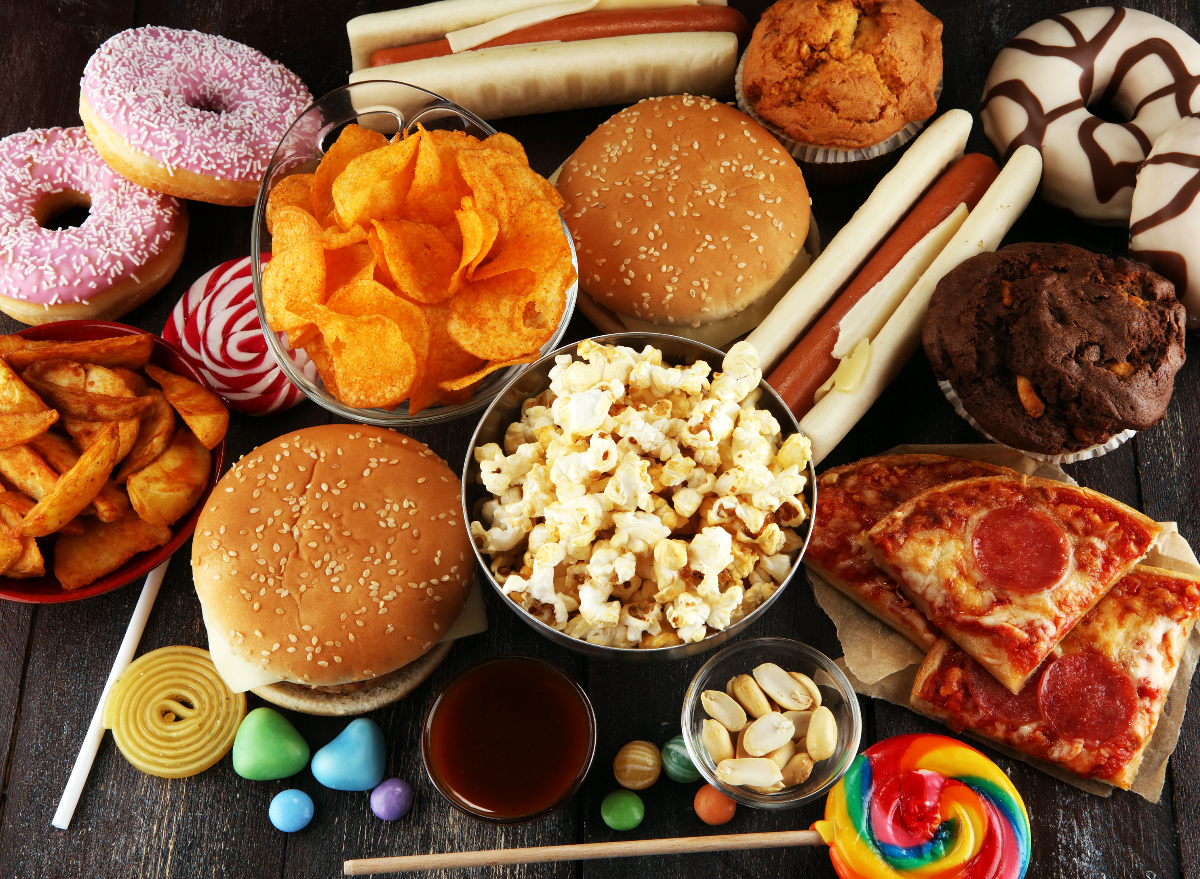
To make matters worse, the sugar crash triggers an incredible amount of hunger, and the process begins all over again. This isn't the end of the world if it's an occasional pizza, but when you're flooding your body with too much insulin, too often, you eventually become insulin resistant—when your muscles, fat, and liver cells don't respond as they normally would. This, of course, leads to diabetes.
Over time, your body behaves in weird ways.
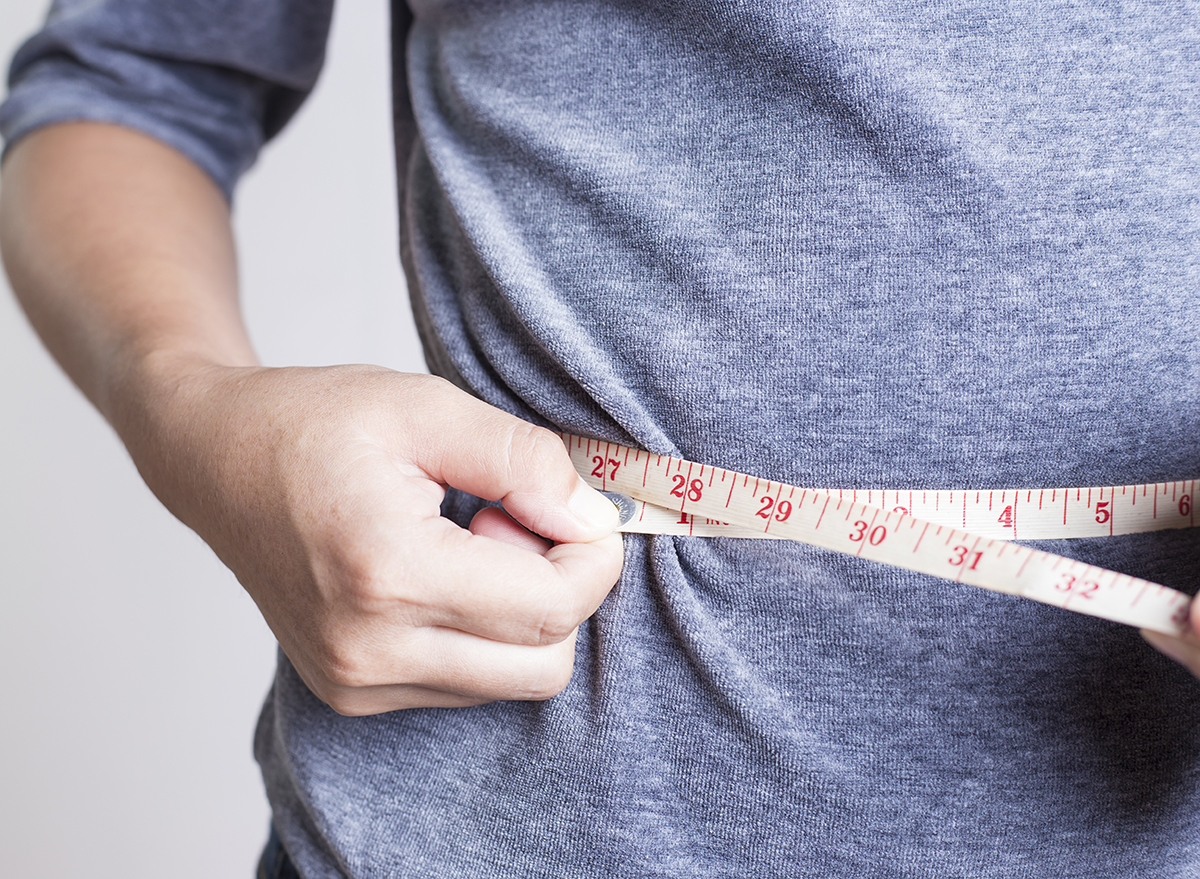
What's really bad is that while you're eating more and more sugars from food, which your body is storing as fat, your body, believe it or not, thinks it's starving.
The fat starts to build up to such high levels that it prevents insulin from working properly in your liver. Your body's countermeasure is to then release glucagon, insulin's pancreatic alter ego, which, under normal conditions, would ignite lipolysis, the process by which your body takes stored fat and burns it off. Instead, it turns on a process called gluconeogenesis, the process of making more glucose naturally. So you're making more sugar as well as eating it!
"By then your body starts to store fat in places it normally wouldn't, like in the liver and in your muscle tissue," says David Mangelsdorf, Ph.D., a professor at UT Southwestern Medical Center and a leading expert on the science of metabolism. "And when your insulin levels rise higher and higher in your bloodstream, they're problematic for driving cell growth—and not always in a good way. Cancer, in particular, loves insulin."
So eat more whole foods, less processed ones.

If you're eating a diet high in processed foods—frozen dinners and pizzas, packaged meats, boxed cereals, instant pastas, foods high in margarine, and any other food that has added chemicals, sugars, high-fructose corn syrup, and any artificial ingredients—there's clear and convincing evidence you're putting your inner power plant on the path of storing more things than it's burning. And for more great advice, make sure you're fully up to speed on these 200 Best Weight Loss Tips of All Time!








